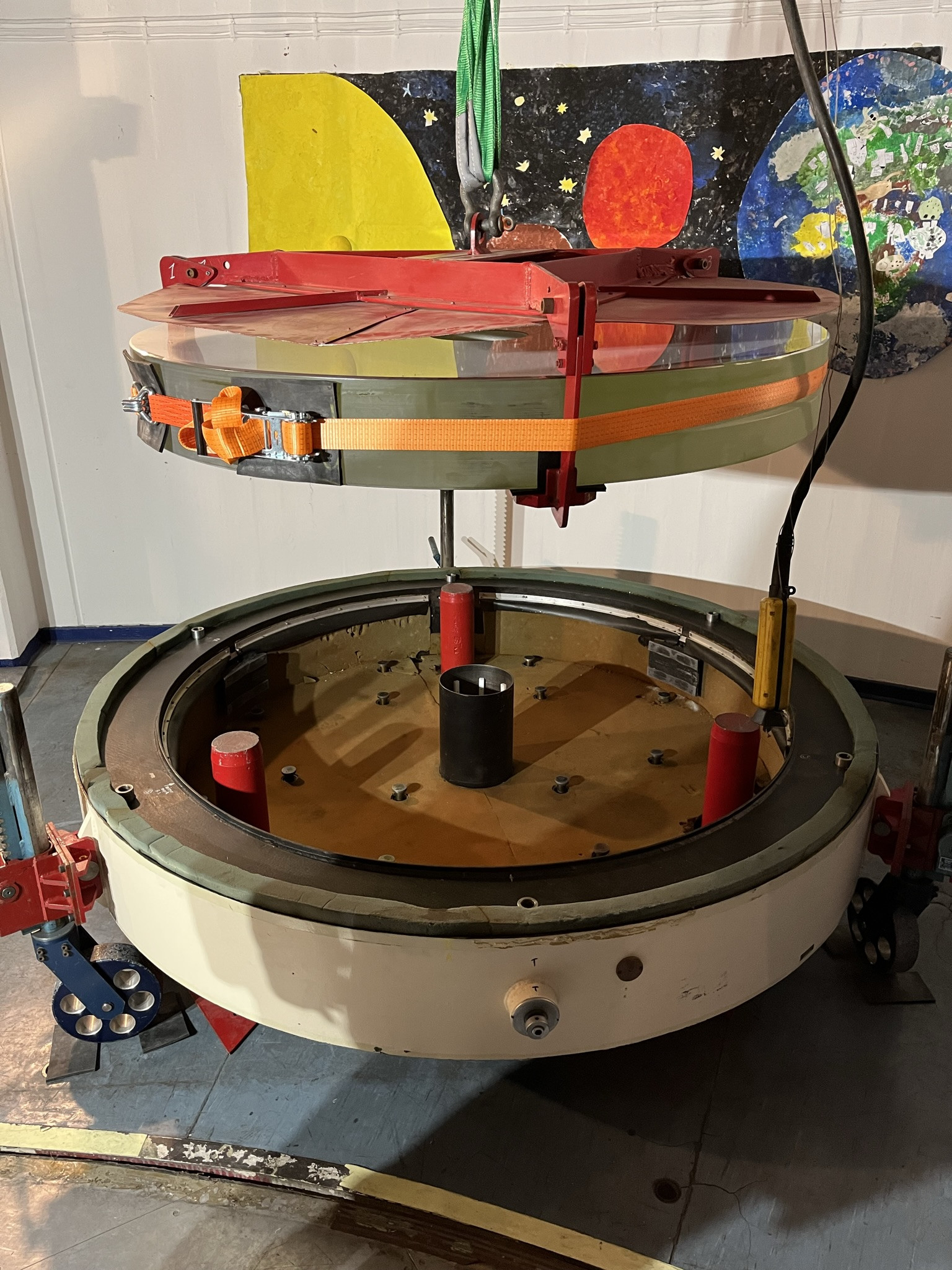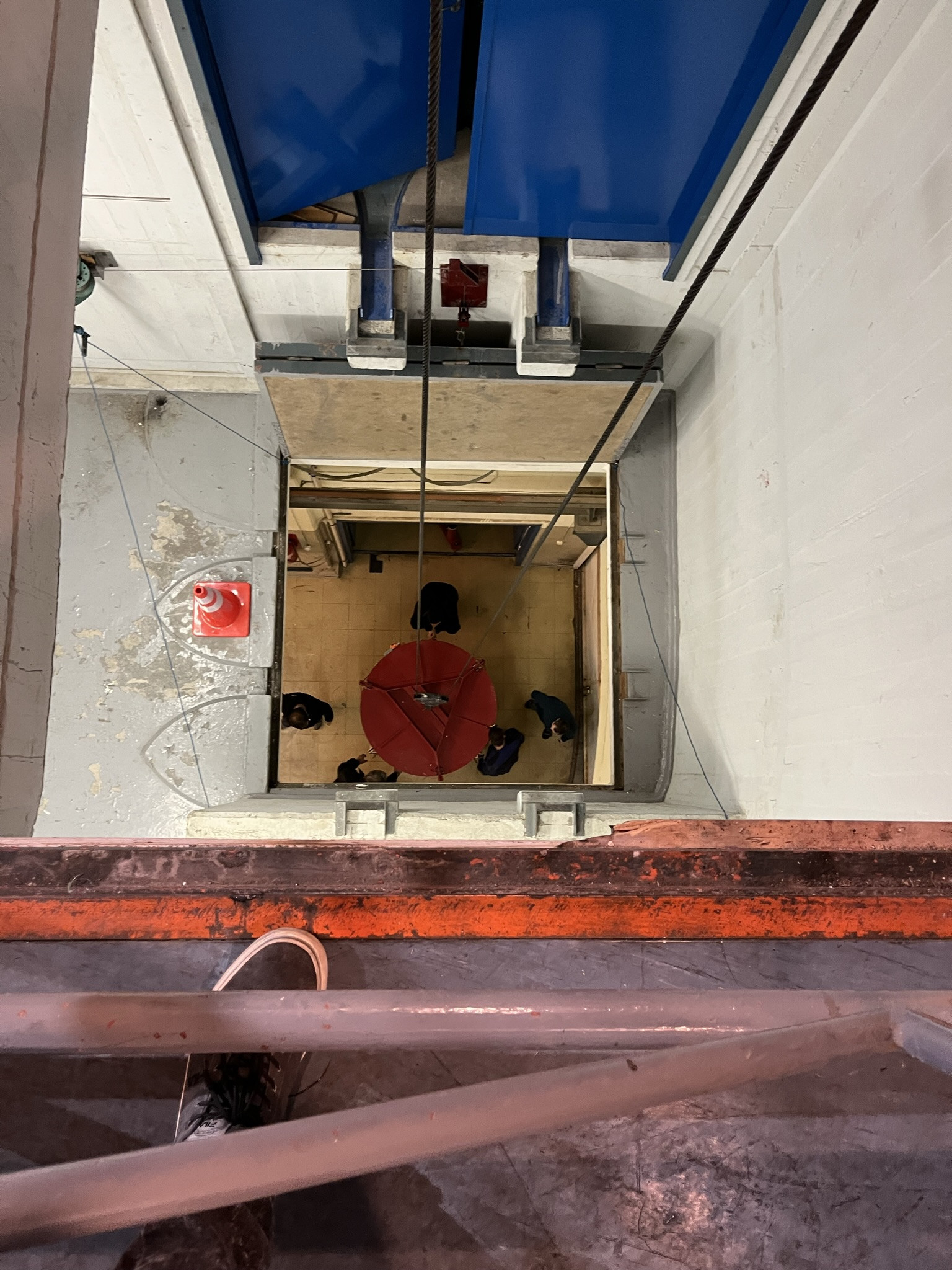EVENTS
News
PLATOSpec science workshop II - Santiago de Chile 9.4.-12.4.2024
How an astronomical mirror becomes an improved view
The PLATOSpec instrument, which will be a planet hunter spectrograph, will be installed on 1.52-m former ESO telescope at La Silla observatory in Chile. The 1.52-m telescope, E152, was one of the first operational telescopes at La Silla and it was inaugurated in 1967. Since then, E152 had installed famous spectrographs, including FEROS, which contributed to the study of thousands of stars in the Milky way. However, the E152 telescope was shut down in 2003. The resurrection of the telescope happened in 2022 when all the systems were upgraded and a new interim spectrograph PUCHEROS+ was mounted. Later in 2024, this spectrograph will be replaced by the PLATOSpec.

But for now, with the telescope operational after the control system upgrade, we needed to settle last issue before we could start regular observing. The main telescope mirror was dusty and the aluminium surface needed a new layer. The aluminimum on the mirror is responsible for the reflection of the light into instruments. The better the layer, the higher the reflectivity and the more light comes to the spectrograph. The aluminimum layer of E152 was not renewed for more than 30 years. Thus we decided to organize a trip to Chile to realuminize the mirror. Here is a short report from our trip and also a description of the whole process.
We arrived in Santiago de Chile on April 13. The short trip to La Serena, a city about 500 km north of Santiago de Chile, was just about 45 minutes from Santiago. The team was in a good mood as you can see in Figure 1.

The arrival at the gate of the European Southern Observatory happened about 2.5 hrs later and we were cheered by a guardian dog as can be seen in Figure 2. At the mountain, our Chilean colleagues, Abner and Luca from Pontifica Universidad Católica were already working at E152, dismounting the front end of the spectrograph PUCHEROS+ and the status of the telescope at this stage can be seen in Figure 3. We met them and after a brief discussion, we went to have a rest after a long trip.


On April 14 and 15, after some rest, we started serious work. First, the mirror was checked (Figure 4). Then an imaging CCD camera was mounted in the cassegrain focus, basically in the bottom part of the telescope as shown in Figure 3. We made a few exposures of some stars to check the alignment of the telescope at night time. The images were stored and checked later once the mirror is back after recoating. All tests were good and we were ready for a big day, when the mirror was removed.
On April 16, the action started, we removed inner parts of the telescope just above the mirror – see Figure 4 from inside of the telescope tube. Then we removed the dish with the main mirror and things started
to be delicate. The naked mirror came out in all of its beauty, we had to be really patient and cautious. See Figure 5 where the mirror is disconnected from the telescope.


We moved the mirror in the telescope dome and prepared the crane. The crane is hanging on the dome, so, if you wish to move the mirror, then one needs to turn the dome. The mirror itself is a single piece of glass with a weight of 800 kg, the pot which holds it adds another 400 kg. This was moved on the small three legs (Figure 6) under the crane and before we moved the mirror down, a photo of a painting depicting the universe how children see it, was taken – see Figure 7. The dome is a big building with 3 floors and we needed to move the mirror from the upper floor to the ground floor, where the coating unit is located. to be delicate. The naked mirror came out in all of its beauty, we had to be really patient and cautious. See Figure 5 where the mirror is disconnected from the telescope.


The operation of test lifting of the mirror by the crane was successful, now the mirror was really naked and we needed to move it about 20 meters down where the coating pant is located – see Figure 8. The lifting went relatively smooth, we were moving naked glass of 800 kg so one needed to be really cautious. However, in the evening of the same day, we were done. The mirror was placed in the mirror lab on the small table under a huge device which is sucking out the air to remove the chemicals used for the mirror washing later – see Figure 9. Goal accomplished for today!

The next days were more relaxed as we were waiting for an ESO optician Andres Gonzales who arrived on 18 April and started to prepare the coating unit – see Figure 10. All was set and we were ready for the big day!


On April 19, Andres washed the mirror and removed the old coating – see Figure 11. Before, he measured the reflectivity to be about 70%. That is not bad given the fact the telescope was out of operations for about 20 years and it was coated only 30 years ago. But still once the old aluminimum coating was removed, we moved the mirror into the coating unit, see Figure 12. We had a brief episode with a fuse of the crane which kicked-in and the crane stopped and we also had some problems with the mirror placement in the coating plant but all was settled by Ludek Řezba, our chief technician and a true hero of the whole operation and finally in the afternoon of April 19, the coating unit started to put on a new aluminium surface on our mirror.

The air was pumped out of the coating unit to create the vacuum. The whole process took about 5 hours. Then Andrés started the process of coating which is done by a few coils which are heated up so the aluminium vaporizes and sticks at the mirror surface which needs to be really clean. Thanks to Andrés this process took only about 45 minutes. Then we inspected the new surface and it was gorgeous – see Figure 13. The chamber was closed and evacuated and the mirror rested there till the next day.


On April 20, we lifted the mirror up to the top floor by the crane (Fig. 14) and the installation in the telescope tube started. Of course, still in the coating plant, we needed to take an obligatory photo of the team – Figure 15. Then the mirror was successfully lifted up into the dome.
Everything went smooth and the mirror was back on 20 April but first everything had to be placed back as it was before. We were eager to take some test images to see whether the mirror was placed and fixed in the correct position. The whole operation was successful and the mirror has now a new aluminium surface. The E152 system with the interim spectrograph PUCHEROS+ is ready to observe. We went back home with a huge experience and we felt relieved that we have mirror in one piece and that we recoated the mirror after 30 years once again. Now, the mirror should have about 2-3 years of operations before it needs a new coating again.

The whole work was conducted successfully thanks to an enormous effort of the teams of:
the Astronomical Institute of the Czech Academy of Sciences: Petr Kabáth, Luděk Řezba, Marek Skarka, Jiří Srba
Thueringerlandessternwarte Tautenburg – Eike Guenther
TopTec Trutnov: Pavel Pintr, Martin Veselý
Graz University – Robert Greimel, Petra Odert, Martin Leitzinger
ESO – Andrés Gonzales and the team
PLATOSpec science workshop - Liblice - 26.-28.7.2023
Past Events
In April 2022, the control systems were delivered and upgraded and the E152 telescope started to breath again. In November 2022, we held a special inauguration
ceremony with the CZ ambassador and consortium partners present. The link for the videoconference (CZ only) can be found here:
Link youtube
Realuminization of the E152 mirror is scheduled for April 12-30. After the realuminization, we plan the telescope to be operational in full observing mode.
PLATOSPec moving to Europe for redesign and back
(in Czech only) -
link to article
PLATOSpec workshop
The workshop took place in the seminar room behind the 2m telescope
Program Draft:
| Monday 29 | |
|---|---|
| 10:00 - 11:00 | Arrival and coffee |
| 11:00 - 11:30 | Welcome and PLATO space mission overview - V. Karas, P. Kabath |
| 11:30 - 12:00 | PLATOSpec presentation - P. Kabath< |
| 12:00 - 12:15 | PLATOSpec design - M. Flores SLIDE : pdf |
| 12:15 - 12:45 | Radial velocity follow-up for space missions - A. Hatzes |
| 12:45 - 13:15 | The purpose of taking one, or few high-resolution spectra of PLATO candidates before we start with precise RV-measurements - E. Guenther SLIDE : pdf |
| 13:15 - 14:30 | LUNCH |
| 14:30 - 15:00 | Ondrejov ground based follow-up facility - P. Kabath/M. Skarka SLIDE : pdf |
| 15:00 - 15:30 | "FIDEOS spectrograph: radial velocity stability results at the ESO1m" - A. Zapata SLIDE : pdf |
| 15:30 - 16:00 | MU presentation - E. Paunzen SLIDE : pdf |
| 16:00 - 16:30 | COFFEE |
| 16:30 - 17:00 | High-resolution echelle at Skalnate Pleso: future plans and development - Th. Pribulla SLIDE : pdf |
| 17:00 - 17:30 | UK presentation - D. Korčáková SLIDE : pdf |
| 17:30 - 18:00 | ESO data format and how to make the data ESO compatible - V. Ivanov SLIDE : pdf |
| 18:00 - 18:30 | Limits of ground based RV surveys - S. Sabotta SLIDE : pdf |
| 18:30 - 18:45 | Discussion and conclusions 1st day |
| 19:30 - ... | DINNER Berchtold |
| Tuesday 30 | |
| 09:00 - 09:30 | Super flares in stars from Kepler field – P. Heinzel |
| 09:30 - 10:00 | Eclipsing binaries in ASAS-SN and APOGEE - M. Pawlak SLIDE : pdf |
| 10:00 - 10:30 | Asteroseismology from high-resolution time-series spectroscopy – P. Beck SLIDE : pdf |
| 10:30 - 11:00 | COFFEE |
| 11:00 - 11:30 | Shellspec: a code for simulating light curves and spectra of interacting binaries and exoplanets - J. Budaj SLIDE : pdf |
| 11:30 - 12:00 | Status and next steps for PLATOSpec projects – P. Kabath + all |
| 12:00 - 14:00 | Discussion and conclusions, plans, funding, participation |
| 14:00 - ... | open end DISCUSSION, LUNCH, departure |